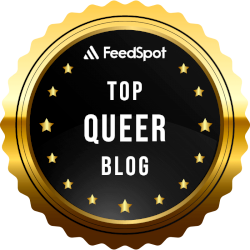Out of the mists of our long oppression...
At the Stonewall Riot in New York 1969 the Queers fought back. Enough of the persecution, enough of the shame and fear, enough of the denial of our Queer Spirit. We stepped into Pride and began a journey of self-acceptance that kicked off a global process, which, 50 years later, is in full swing. As our Pride gatherings around the world we declare loud and clear – we are a rainbow people who celebrate freedom, love and self-expression. A people rising from the ashes of a conflagration against our kind that has lasted for far too long and now has to end...
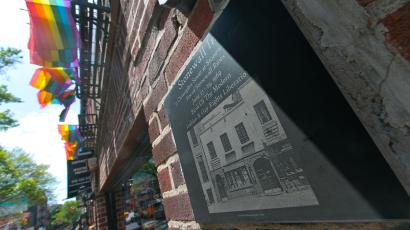 For gay men, 1969-1981 were the Gay Garden of Eden years, not that many on the planet actually got to enjoy them. Homophobia was deep-rooted in just about all the cultures of the planet by this time, having been spread by Christian European explorers seeking to break the spirit of the cultures they came into contact with – for as the world opened up, the shocked Europeans found cross-dressing, gender-bending, sodomising shamans, witches and priests everywhere. They did not know that in ancient times the religious life of Europe and the Middle East had been just as queer.
For gay men, 1969-1981 were the Gay Garden of Eden years, not that many on the planet actually got to enjoy them. Homophobia was deep-rooted in just about all the cultures of the planet by this time, having been spread by Christian European explorers seeking to break the spirit of the cultures they came into contact with – for as the world opened up, the shocked Europeans found cross-dressing, gender-bending, sodomising shamans, witches and priests everywhere. They did not know that in ancient times the religious life of Europe and the Middle East had been just as queer.
The 1970s tide of gay liberation was riding on the tailwind of hippy culture and the sexual revolution – so, while for many queers the new sexually free atmosphere was enough, for some this whirlwind of counter-cultural energies opened up a very radical vision of the role of gay, lesbian and trans/non-binary/genderqueer people in society. While many sought to fit in and be accepted by society at large, the radical edge of the queer community was seeking something more. Those on that edge found that the way into this exploration of our true, and long denied, nature was through our hidden spiritual history, and certain gay men were to push this search forwards.
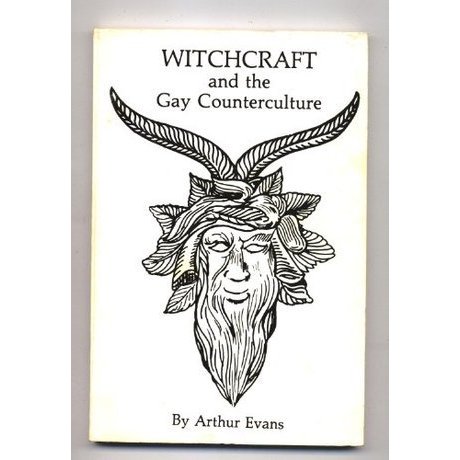
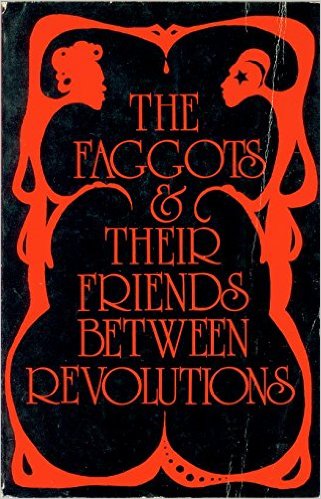
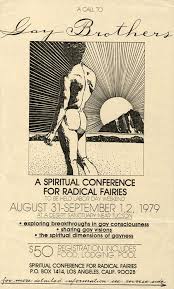
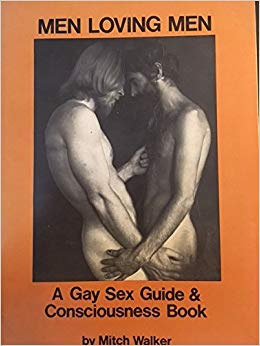
San Franscisco was of course a hotbed of this essentialist wave – in 1975 the 'Faery Circle' was called into being there by Arthur Evans to explore the magical roots of queer consciousness. His 1978 book 'Witchcraft and the Gay Counter-Culture' ('A Radical View of Western Civilization and Some of the People it Has Tried to Destroy') opened up understanding of the connections between patriarchal religious control and the suppression of the feminine/mystical/magical pagan past. He argued that the role of gay men today is to re-establish our communication with nature and the Great Mother, to feeling the essential link between sex and the forces that hold the universe together.
Larry Michell's inspired piece of queer literature, also from '78, 'The Faggots and their Friends between Revolutions' spotted that the motives behind this suppression of the spirit were political,-
“The first revolutions destroyed the great cultures of the women. Once the men triumphed, all that was other from them was considered inferior and therefore worthy only of abuse and contempt and extinction. Stories told of these times are of heroic action and terrifying defeat and silent waiting. Stories told of these times make the faggots and their friends weep. The second revolutions made many of the people less poor and a small group of men without color very rich. With craftiness and wit the faggots and their friends are able to live in this time, some in comfort and some in defiance. The men remain enchanted by plunder and destruction. The men are deceived easily and so the faggots and their friends have nearly enough to eat and more than enough time to think about what it means to be alive as the third revolutions are beginning.”
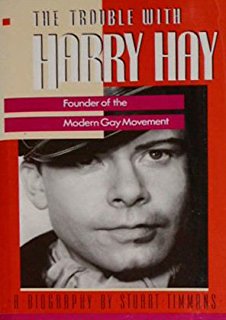
Life-long activist Harry Hay founded the first gay rights group the Mattachine Society in the 1950s, but was edged out quickly as gay men who sought conventionality and assimilation into polite society took it over. In the '60s he set up the 'Circle of Loving Companions' and by the 1970s he was totally focussed on the unique gifts that queerkind bring to humanity. He had become convinced that our sexuality was intrinsically related to the spirit realms, -
“Our beautiful lovely sexuality is the gateway to spirit. Under all organised religions of the past, Judaism, Christianity, Islam, there has been a separation of carnality, or shall we say of flesh or earth or sex, and spirituality. As far as I am concerned they are all the same thing, and what we need to do as faeries is to tie it all back together again.”
These 1970s visionaries were getting bold. In Witchcraft and the Gay Counter-Culture, Evans declared, -
“We look forward to regaining our ancient historical roles as medicine people, healers, prophets, shamans and sorcerers. We look forward to an endless and fathomless process of coming out – as gay people, as animals, as humans, as mysterious and powerful spirits that move through the life cycle of the cosmos….. Like butterflies we are emerging from the shells of our past restricted existence. We are re-discovering the ancient magic that was once the birth right of all human beings. We are re-learning how to talk to the worms and the stars. We are taking flight on the wings of self-determination. Come, blessed Lady of the Flowers, Queen of Heaven, creator and destroyer, Kali – we are dancing the dance of your coming.”
Out of this swirling pool of potential was born the first Radical Faerie gathering, which took place in a desert sanctuary in Arizona in September 1979. It was billed as a 'Spiritual Conference' aiming to explore “the spiritual dimensions of gayness” - 220 men got to this gathering, sat and listened to each other's stories, found a common love of nature and the, now global, Radical Faerie Community was born. Arthur Evans described faeries as demonstrating a "gay sensibility, neo-paganism, and a sheer Whitmanesque celebration of the body and of sex.”
The reference to Whitman refers to the person considered to be America's greatest poet, Walt, who in the 19th century had dared to write down his vision of a future democracy living in peace due to the strong loving bonds between men. He wrote, -
“Come, I will make the continent indissoluble,
I will make the most splendid race the sun ever shone upon,
I will make divine magnetic lands,
With the love of comrades,
With the life-long love of comrades.”
Whitman opened the doors to the celebration of the body as holy through works like 'I sing the Body Electric'. As a gay man he saw that the denial of the pleasures of the flesh that religion imposed on society cut humanity off from its divine potential, -
“Divine am I inside and out, and I make holy whatever I touch or am touch’d from, The scent of these armpits is aroma finer than prayer, This head more than churches, bibles and all the creeds… if I worship one thing more than another it shall be the spread of my own body”
Mitch Walker carried this theme in the '70s, publishing 'Men Loving Men: Gay Sex Guide and Consciousness Book' in 1977, concluding it with a section on the mystical potential in gay love and sex to reveal to us the divine play of consciousness in the universe.
“When we fall in love with another man we're getting in touch with an unconscious spirit-source, by evoking it in our beloved. We can follow this magic inside us back to its source, and use it to uncover our real nature.”
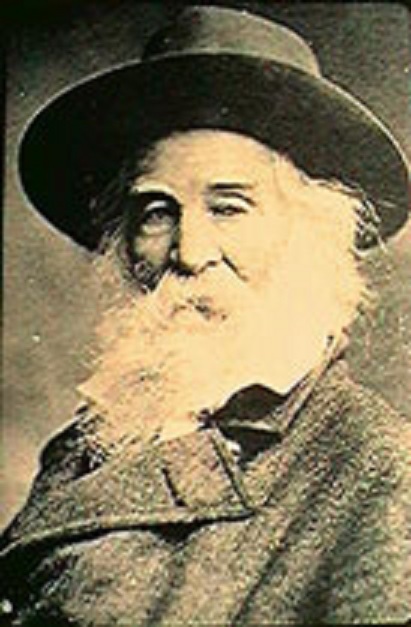


19th century European pioneers of queer consciousness also had grand visions of our role in society, and from the first stirrings of self-conscious gay sensibility proclaimed a link to the spiritual. Karl Heinrich Ulrichs in Germany and Edward Carpenter in England used the term 'Uranian' to refer to gay men, lesbians and all, what they termed 'intermediate types', seeking to connect us to the perceived nobility of ancient Greek culture – Urania being a form of the Goddess Aphrodite particularly concerned with spiritual love. Carpenter published the results of his research as 'Intermediate Types Among Primitive Folk' in 1914, exploring examples from America, feudal Japan, the cross-dressing, sodomising Qedesha goddess priests of the Middle East so hated by the ancient Hebrews, and also same sex Christian unions in the Balkans. Carpenter dared to write about the link between same-sex love and the shamanic practitioners in tribal cultures - although this link had not been lost on the European explorers arriving in the New World from the 15th century onwards: discovering that the spiritual power in the tribes was held by gender-bending, same sex loving individuals they set about destroying that power by spreading their Christian judgement of effeminacy and sodomy - they called the holy shamans 'berdache', a French word for the passive partner in that act. This term stuck until the 1990s when the shamans chose the word 'Two-Spirit' to replace it, this term having resonance with the some 500 words Native American cultures had once used.
By 1990 of course the gay male community was deep in the middle of a crisis that threatened every gain we had made. AIDS ravaged our world, making the magical promises of the 1970s seem far away. "Come, blessed Lady of the Flowers, Queen of Heaven, creator and destroyer, Kali - we are dancing the dance of your coming" said the emerging queer witches of the Eden decade - and She came: dark, ferocious, deadly. The Goddess came as darkness because she had been banished into darkness by patriarchal religion for a very long time. We, her queer priests, servants, lovers and fools no longer knew who we were, we no longer knew what we could do with our sexuality, what it could bring to the world. In a secular, religiously conflicted age, nobody seems to remember who the queer ones are. Which is why we need time and space, in our own sacred groves and healing sanctuaries, to explore within ourselves, to find out.
Harry Hay said, -
"Out of the mists of our long oppression,
We bring love for ourselves and each other,
And love for the gifts we bear,
So heavy and so painful the fashioning of them,
So long the road given us to travel them. A separate people,
We bring a gift to celebrate each other,
'Tis a gift to be gay!
Feel the pride of it!”
In the 1980s and 90s our energies had to be channelled away from potential and into pure survival, and this period also revealed just how deep-rooted was societal homophobia and how much work there was to be done on political, legal and social levels before we, or the rest of the world, could really start to take on board the journey to spiritual liberation that is the logical and ultimately inevitable end place of the journey of sexual liberation that began in the 1960s. This political work has continued since the advent of effective medicine to treat HIV, with equal marriage rights spreading through the western world – and producing a backlash in Africa and other countries, which has served to put the question of our rights and our identity into a global focus.
The quest for queer spirited conscious community has been going on on the sidelines of gay life throughout this time. Two years after the first Radical Faerie gathering the first permanent Faerie sanctuary was founded, at Short Mountain in Tennessee, and in the four decades since there have been other sanctuaries established in the USA, Canada, Australia and Europe, plus gatherings in Israel, Thailand and China. As a group of mainly gay men, the Faeries have been one of the few outfits celebrating the feminine, cissy side of our nature, in contrast to the enduring machismo obsessed mainstream gay culture, and over the decades the Faeries have become more diverse, and how could they not, since themes of gender play and transcendence of limiting human beliefs are a big part of faerie magic.
In fact as we approach the 2020s there are way more gay men involved in the spiritual search than there were back in the 1970s, a fact that is reflected in the number of books on gay spirit that have been published since, by authors including Toby Johnson, Mark Thompson, Andrew Harvey, Christian de la Huerta. Men's spirituality is growing up and there is perhaps now a chance for gay male spirituality to join with the other tributaries of queer spirituality to find their common ground.
In this essay I have had a lot to say about the gay male journey through these decades. The parallel stories to be told are those of the lesbians in the Goddess movement, of their radical history of protest and community building at Greenham Common and through Spiral Camp and Women's Land etc, and of the emergence of the Trans/Non-binary identities, with the subsequent reclaiming of the spiritual power going on there also, via the work of Raven Kaldera, Bright Daffodil and other. The vision behind the brand new Queer Spirit Festival, which launched in 2016, is to bring together all the queer tribes under the rainbow of our united quest for spiritual knowledge and liberty. The joined prayers and healing that we experience when we come together are for ourselves and for all our kind across the planet.
Meanwhile the mainstream gay universe has not woken up to any sense of spiritual growth yet, it generally continues its flirtation with the commercially driven, marriage-approving, patriarchal military-industrial complex and doesn't give attention to the magical paths of self-discovery that many queers choose to explore. Gay media over the years has looked at the efforts of gays in established religions to find acceptance, but little to the radical, nature-based pagan faerie celebrations or to gays who seek self-awareness through magical practices, yoga or meditation, or even psychedelics for that matter – the sacraments that our gay culture subtly promotes encourage us to self indulgence not self discovery. In London the Connections conferences of the late 1990s and LoveSpirit in the early 2010s brought hundreds of queers together to share their spiritual interests, but against the huge tide of intoxication and indulgence that continues to sit at the centre of gay culture they had little impact.
The trend was clear from the 1970s – an obsession with the physical aspect of who we are puts sex firmly in the centre of the picture for gay men, and things are not so different at the end of the second decade of the 21st century. For trans people also, the focus on the physical aspect of the process can mean the ancient, spiritual roots of trans nature are completely overlooked. But now the gay mainstream is increasingly aware that the superficial is not after all supreme and is looking for answers to the ongoing sense of crisis in gay life – some go so far as to say that the spread of drug use among men who have sex with men, with resultant addictions, crises and deaths is a second plague amongst us.
So many reasons underlie this drug using trend, and are much discussed elsewhere – but one underlying factor that isn't yet properly grasped is that humanity has always used substances to open the inner being and commune with the spirit realms of existence. Gay men, liberated sexually in age that doesn't recognise the spiritual reality within us, using Tina etc are turning their own gifts on themselves, cutting off their natural ability to commune and empathise with others soul to soul, using drugs that feed the ego (as opposed to those which open the heart or consciousness). The drugs enable some men to forget their minds, their issues, their fears and enjoy the moment of ecstatic connection, but they gradually lose the ability to find that natural bliss through empathic loving connection to others. Only nature can restore this gift to us once lost, and I believe that in our faerie sanctuaries, and our queer spirit enclaves wherever they may pop up, we offer the healing, the insight and understanding that is needed to bring the LGBTIQ+ community to a level of self-awareness that will change things, and that will reverberate strongly around the world, bringing a revolution in understanding and a new mythology about Who We Are on a global level.
It is in Chechnya, and Uganda, Nigeria and Egypt, in Azerbaijan, Indonesia, Saudi Arabia and too many other places that our queer sisters and brothers are most in need of this change of consciousness, in places where the homophobia imposed and justified by religions is still having its evil effects. We in the west have our issues to sort out, but we also have a freedom to explore our queer spirit that was never there before – and this time round, unlike the 1970s, when the queer spirit was first attempting to burst forth, we are five decades into a journey of liberation. We survived the AIDS holocaust, and grew through the experiences of that time, we have had a chance to mature somewhat and accept this journey is a longer one than some at first thought.

Queer Spirituality is the next step for the global upsurge of difference that has for five decades been daring to proudly declare its name... but it is slow to make an impact on mainstream gay male life because MANY OF THE PIONEERING, RADICAL QUEER MEN WHO WOULD HAVE BEEN PART OF THIS REVOLUTION IN CONSCIOUSNESS DIED OF AIDS.
This was history repeating itself. The shamans were culled and as a result the people, ie the wider gay community, has become lost in an ocean of substance abuse, just as happened to the tribal peoples when the Europeans took over. But shamans are born in every generation, and some of us – just a crucial few – survived the plague, and we are here to tell some tales.
I am an one such AIDS survivor who used my sick years to question reality, to become aware of Kali, the Great Mother, shrouded in darkness for so many centuries, and to receive her visions of gay love, seeking to find fellow explorers of the Goddess mysteries and be ready for the next resurgence of the queer phoenix, of queer spirit, calling us to know, love and BE our true, liberated, horny, magical, queer Selves. As an organiser of Queer Spirit Festival I am excited to sounding this call, on behalf of queerkind of all genders, sexualities, races and nations.
Shokti

